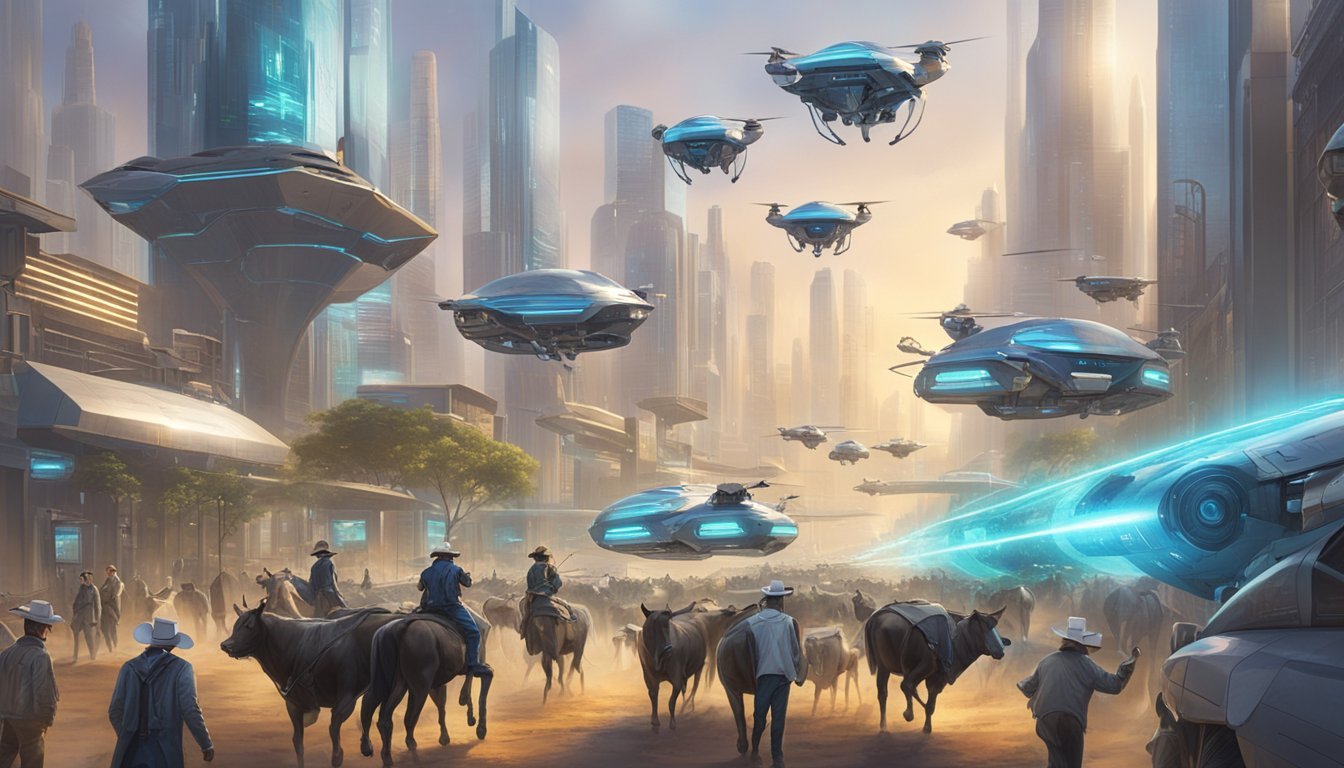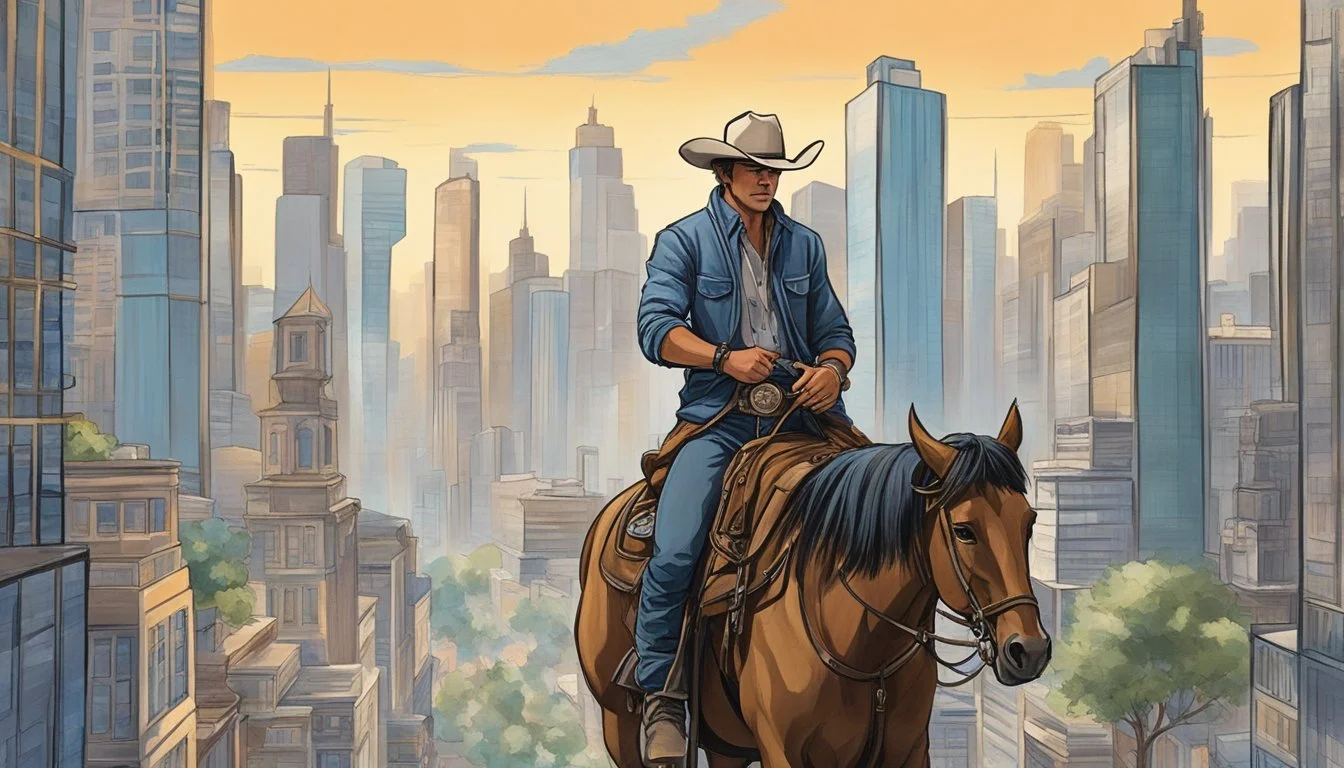The Future of Cowboy Culture in the 21st Century
Evolution and Endurance
Cowboy culture, emblazoned with the romantic image of rugged individuals herding cattle across the expansive prairies of the American West, has long captured the imaginations of people worldwide. These iconic figures, from the historic cattle drives to the modern rodeo, are emblematic of a unique heritage that has shaped not only the landscape but also the American identity. As the 21st century progresses, this rich tradition faces the dual challenge of preserving its historic roots while adapting to contemporary societal changes.
With the advent of technological innovation and a shifting rural economy, the cowboy profession has seen significant transformation. The archetype of a cowboy, once a cattle herder on horseback, now also encompasses a broader role that includes modern ranching practices and land stewardship. This evolution raises important questions about the future of cowboy culture and its place in American society. How will tradition hold up against an ever-modernizing world, and what forms will this enduring symbol of the American frontier take as it moves forward?
Relevant cultural institutions, such as the National Cowboy & Western Heritage Museum, continue to play a pivotal role in documenting and preserving the historical artifacts and stories of the cowboy legacy. The dedication to maintaining this culture suggests a continued reverence for the cowboy way of life. Meanwhile, the survival of cowboy poetry, an art form born from the day-to-day experiences and reflections of cowboys, may serve as a litmus test for the vitality of the culture itself. As with any aspect of heritage, the key to the future of cowboy culture lies in the balance between honoring tradition and embracing innovation.
Historical Overview of Cowboy Culture
The cowboy has become an American cultural icon, but this figure's evolution is a rich tapestry woven from diverse heritages and practices that spread across centuries and cultures.
Origins and Evolution of the American Cowboy
The American cowboy emerged in the 19th century, following a tradition that can be traced back to the Spanish conquest of the Americas. As Europeans settled the West, they learned from Native Americans and adopted Spanish colonial ranching techniques. With vast lands acquired during westward expansion, the demand for skilled herders gave birth to the cowboy's life of driving cattle over the open range.
Influence of Mexican Vaqueros
Mexican Vaqueros, skilled horsemen and cattle herders, were instrumental in shaping the cowboy culture. Their expertise in livestock handling was developed over generations prior to the cowboy's rise. The American cowboy attire, rodeo, and round-up traditions have origins deeply rooted in the vaquero practices.
Attire: Adapted from vaqueros, with modifications (e.g., hats, boots)
Techniques: Roping, branding, herding strategies
Language: Many cowboy terms (e.g., "rodeo," "lasso") derive from Spanish
African American and Indigenous Contributions
Despite often being overlooked in popular narratives, African Americans and Indigenous people significantly influenced cowboy history. Estimates suggest that one in four cowboys were African American, while Indigenous tribes shared valuable knowledge of the terrain and animal behavior.
Roles: Freed slaves and Native people often worked as cowboys.
Skills: Knowledge of native plants, tracking, and survival techniques.
Legacy: Many celebrated black cowboys, like Bill Pickett, left a mark on rodeo sports.
This section has examined critical influences that led to the unique blend of cultures which define the historical cowboy culture in the United States.
Cowboy Culture in Modern Society
The enduring image of the cowboy continues to evolve, adapting to modern trends while maintaining its rich historical traditions. The transition into the 21st century has seen cowboy culture affected by technological advances, shifts in media portrayals, and greater diversity among its representatives.
Ranching and Rodeo: Traditions in Transition
Modern ranching practices have incorporated advanced technologies, such as GPS and drone surveillance, to manage cattle and land more efficiently. However, the essentials of horsemanship and livestock care remain largely unchanged, preserving the authenticity of the cowboy way of life. Rodeo maintains its status as a popular sport, showcasing skills like roping and riding, though animal welfare concerns have prompted changes in how these events are managed and perceived.
Ranching Tools: GPS tracking, Drones, Automated feeding systems
Rodeo Events: Bull riding, Barrel racing, Team roping
The Representation of Cowboys in Modern Media
Contemporary westerns contrast markedly with the depictions of the ‘Cowboys and Indians’ era, focusing more on the complexities of frontier life rather than old myths. Television and film provide varied and nuanced portrayals, from the classic hero to the conflicted antihero. Cowgirl characters, too, have gained prominence, reflecting the rise of women in rodeo and ranching.
Film: Unforgiven, The Rider
Television: Yellowstone, Longmire
Diverse Faces of Cowboy Culture Today
Today’s cowboys and cowgirls come from a myriad of backgrounds, representing the true mosaic of modern America. Across the West and beyond, men and women of different ethnicities and cultures embody the cowboy spirit, contributing to a more inclusive narrative. The culture embraces new participants while paying homage to the historic figures of the Old West.
Ethnic Diversity: Hispanic, African American, Native American cowboys
Influence: Music, Fashion, Lifestyle
Geographical Significance
This section explores the enduring connection between the cowboy culture and its geographical roots, examining the distinctive heritages of notable regions in the United States, as well as the culture's extension into Mexico and beyond.
The American West: Iconic Landscapes and Cowboy Lifestyle
The American West is often depicted as the quintessential backdrop for the cowboy lifestyle. It is defined by vast, open spaces and rugged terrain, which have shaped the cowboy's work and way of life. States like Wyoming, Montana, and Colorado offer landscapes where cattle ranching continues to be a way of life, and rodeos remain popular cultural events that embody the spirit of the historic cowboy.
Texas and California: State-Specific Cowboy Heritages
Texas boasts its own unique cowboy heritage, with historical sites such as the King Ranch still in operation, celebrating cowboy culture through preservation of traditions and cattle ranching practices. On the other hand, California—particularly Southern California—holds festivals celebrating the Spanish vaquero influences on the local cowboy culture. Each state showcases its individual identity within the broader narrative of cowboy history.
Key Traditions in Texas:
Rodeos
Cattle drives
Country music
California's Cultural Contributions:
Vaquero festivals
Spanish influence on horsemanship
Mission period influences on ranching
Cowboy Culture Beyond the US: Mexico and Beyond
Cowboy culture is not confined to the United States. In Mexico, the charro remains a cultural icon, with deep equestrian traditions linked to the U.S. cowboy. Internationally, similar figures like the gaucho of South America echo the cowboy archetype. Elements of attire, livestock management, and cultural ceremonies related to these figures bear resemblance to the American cowboy tradition but are adapted to local customs and environments.
Contemporary Challenges and Future of Cowboy Culture
As the 21st century progresses, cowboy culture faces a series of critical challenges that shape its future. These include economic pressures on ranching, environmental issues such as water scarcity, and the balance between preserving traditions and adapting to a postmodern society.
Economic Realities and the Future of Ranches
Modern ranchers confront economic hurdles that put the sustainability of their livelihoods at risk. The ranching industry is grappling with increased production costs, changing market demands, and competition from large-scale agribusinesses. With profit margins shrinking, innovative approaches to cattle ranching and land management are essential for the survival of small to medium-sized ranches.
Environmental Concerns: Water Rights and Drought
Water rights have become a contentious issue, with both ranchers and environmentalists vying for access to scarce water resources. Prolonged drought conditions exacerbate this issue, adversely affecting cattle drives and the health of livestock. The allocation of water rights and the implementation of sustainable water management practices are critical for the ranching community's future and the environment.
Preservation of Traditions in a Postmodern Society
Cowboy culture, with its rich heritage, faces the challenge of maintaining its traditions within a rapidly changing postmodern society. Aspects like rodeos, horseback skills, and the cowboy ethos are integral to its identity. Yet, there's a delicate balance to strike between honoring these traditions and evolving with contemporary cultural shifts, ensuring that this culture remains relevant to future generations.
Cowboy Culture and Sociological Perspectives
Cowboy culture continues to evolve, often analyzed through sociological frameworks. Sociologists are increasingly interested in how this iconic symbol interacts with modern societal issues and individual identity formation.
C. Wright Mills and Cowboy Iconography
C. Wright Mills, a 20th-century sociologist, examined cultural archetypes like the cowboy and their roles in American society. Mills's intellectual biography suggests that he considered such figures not just as symbols but as pivotal in shaping cultural consciousness. Mills's early life experiences in Texas, among cowboys, likely influenced his insights into their emblematic status.
The Cowboy in Millsian Scholarship
In Millsian scholarship, the cowboy archetype is seen as a microcosm of larger societal patterns. Mills's forward-looking vision included scrutinizing these cultural icons to understand looming problems of his era. This lens is powerful for understanding how cowboy culture adapts and is interpreted, reflecting changes within wider social contexts.
Cowboy Culture Through the Lens of Sociology Today
Sociology today continues to analyze cowboy culture, focusing on its implications on masculinity, American identity, and media representations. Using a sociologist's tools, the contemporary significance of cowboys within society is dissected to reveal underlying themes of power, resilience, and transformation that resonate beyond their historical roots.
Conclusion: The Enduring Legacy of the Cowboy
The cowboy remains a prominent symbol in American culture, representing ideals such as freedom, resilience, and independence. This legacy is not merely a relic of the past but continues to be celebrated and evolves with modern times.
Traditions Preserved
Rodeos and ranching activities
Cowboy poetry and storytelling
Western genre in film and literature
Influence on Society
Cowboys exemplify hard work and determination, values still esteemed today.
The cowboy image is interwoven with the identity of states like Texas, shaping their cultural expressions.
Adaptations to contemporary life ensure the cowboy's relevance. Aspects of the cowboy lifestyle are integrated into fashion, music, and entertainment, garnering new audiences and preserving the spirit of the West for future generations.
Despite the challenges of modernity, the cowboy endures as an iconic figure, a testament to the strength and adaptability of this cultural cornerstone. The cowboy’s future, while rooted in historical traditions, is undoubtedly dynamic, capable of withstanding the test of time.






